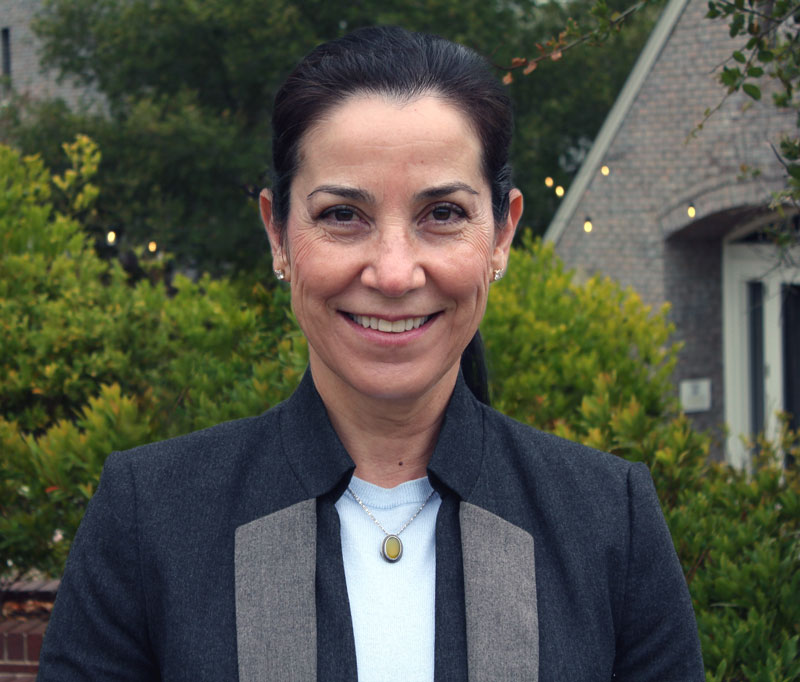Executive Q&A with Noushin Dunkelman
Originally published on CG Life
Noushin Dunkelman is the Founder and President of MaxSynergy Consulting, LLC, an organizational development company. She works with early-stage and mid-size biotech companies to create a strong company culture through leadership development and creating clear communication channels that position each company for long-term success.
Noushin sat down with CGLIFE to tell us the most common problems that she sees in biotech companies and how to avoid them.

What do you do as an organizational consultant?
In biotech, we need to work cohesively to achieve goals. I coach people and organizations through leadership development, creating missing processes, establishing role clarity, and facilitating communication to build high-performing, productive and engaged teams.
What are the most common problems you see?
Communication is the major problem, especially with organizations that have some remote team members. The most common problem results from a lack of communication skills, causing misunderstanding and confusion.
Leaders may need to refine their tools to better communicate their vision, negotiate changes, motivate and bring their people along. Many companies have defined goals and objectives but have difficulty communicating their company objectives to the team, defining goals for individual teams and individual employees and explaining how those goals will be measured. Alignment of goals throughout the organization is critical as companies grow.
How do the problems differ between early-stage and mid-size companies?
Communication is easier in early-stage companies because there are not many management layers in the organization and most startups focus on one specific thing. The team is smaller and communication is more rapid. In larger companies, there are more layers so the message can be lost as everyone has their own interpretation of the message.
What advice do you have for early-stage biotechs?
One of the things that I try to do is help startup companies to establish the right foundation and to think from the beginning about long-term success not just build a company to a point of a buyout or partnering. As the company grows, if there is not a sound foundation, everything starts to crumble – I see it over and over again. Leadership development is critical. So is setting up clear communication channels from the beginning. Simple things like if you have sent three emails back and forth on a subject without resolving it, set up a quick meeting to discuss and move forward.
It is very important to be intentional in establishing your company culture early on. Identify things that you value and use that to anchor your team as your company grows and changes and as you add new team members.
New team members are critical to the success of a small company as one person can have a big effect on a small team. Have an understanding up front of why are you hiring this person. It can’t just be technical. They have to fit with the rest of the team and with your company values. If they’ve gone to school, they are smart and they can learn technical/scientific details but you can’t teach people to fit into a team and you can’t teach them your ethics. Most people ask the technical questions in interviews but not everyone is good at asking the ‘culture fit’ questions. Interviewing is a skill that many people do not recognize or appreciate but can be taught.
What are the particular issues with remote team management and how can people deal with that?
The biggest challenge is creating connection and making them feel part of the team and making sure that effective communication systems are in place. When people are remote, they are not completely connected. They don’t know each other on a personal level, so conflicts become more apparent and people can skirt around issues. The speed of communication can be too slow as people can rely on email too much. One conversation can solve a problem immediately.
How did you get to this job? What was your job path?
I have worked in biotech for 25 years as a process engineer and I love the technical side of things – that’s why people hired me – but as time went on, my supervisors and CEOs hired me not only for my technical skills but also for my ability to get teams across the organization to work together as one to achieve the company’s goals. About three years ago I decided why not provide my skill set to others in our industry so I started the MaxSynergy Consulting. Because of my first hand experiences with challenges in our industry I am able to provide customized solutions that match the specific needs of the organizations to build high performing, productive and engaged team.
Do you have any advice for people looking to transition from academia to industry?
Show that you have transferable skills – how you approach problem solving, that you are team orientated, organized and process driven. Become familiar with biotech as an industry. It’s not only science. Working within a team setting is also critical. There is a lot of competition in academia and you have to carve out your own area of research, but in industry you won’t succeed if you can’t work in a team and work towards the organization’s goals.
Volunteering or doing internships is a great way to learn how biotech works and to understand things like quality control, quality assurance and regulatory concerns. When you understand those things, you have a different perspective when doing your experiments.
I was in tech transfer for a lot of my career and one of the biggest problems was that half of the work could not be repeated because people didn’t write SOPs. It will help you if you show that you can work in the same way as scientists work in industry.
What do you look for in employees?
Their ability to adapt to change, to truly get the big picture, and pivot as the programs within the organization change. For research scientists, I look for someone who delivers quality results and someone who won’t get stuck in wanting to just do their experiment. Someone who is able to think out of the box and be creative when solving problems, who understands the bigger objective – which is bringing therapy to patients.
For managers, I look for people who can lead and communicate and get their team members to see the company vision and understand why they are here. A person who can explain why certain things need to be done and can teach team members about how their work affects others in the organization. For example, how the quality and timeliness of their work help s the CEO to better position the company for fundraising.
What makes someone a good CEO?
Great CEOs have a clear vision, set high standards and set an excellent example for their team. They are able to communicate their vision clearly and motivate the team around their vision. They show how committed they are to their vision. They don’t only speak it, but they demonstrate it too.
They also treat their employees with respect and care. One of the best CEOs I have worked with would tell his employees, “I am investing in you so that when you leave here, you leave with better tools and abilities and I will continue to invest in you.”
Another would come into the lab if we had done a big experiment and we were able to make it work and would tell the scientists that this would make a really big difference when he went out for fundraising. He connected them to what he was doing.
CEOs can’t always be there every day so it’s also important that they surround themselves with a good executive team who are aligned with their leadership style.
How can someone become a better leader?
I say this to every leader I work with, especially younger leaders – once you have a team under you, it’s no longer about you, it’s about your team and the company. I believe in servant leadership. You hired your people for their skills and their abilities, your job is to help them understand their strengths and to be a multiplier not an administrator. You need to give them the freedom to do what they need to do, but also create a relationship where they come to you for guidance. Make sure you remove the weeds out of the way so they can do their job better. Challenge them to solve problems and to be creative.
What do you think are the biggest challenges facing the life science industry at the moment?
Funding is always a problem and part of that is our fault. In biotech we have smart people and most of the time we have good technology, but we can’t always pull it together and deliver on what we promised.
To me, it always goes back to setting the foundation correctly. Sometimes we do take a lot of shortcuts because finance organizations don’t have the patience for our industry, but the people who are successful are the ones who don’t cut corners to get the next funding. They are the ones who are intentional about how they do things scientifically and how they develop their organization.
